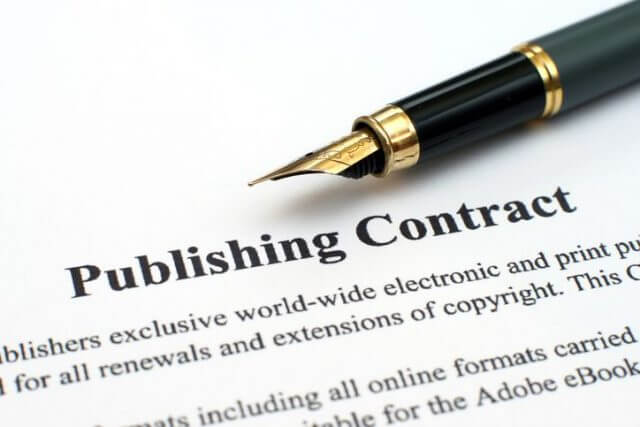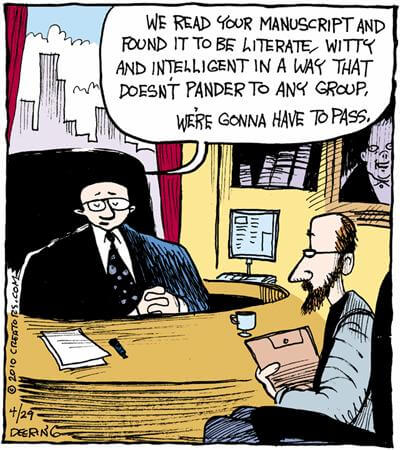It’s said that we all have a book inside us waiting to come out and whilst this may be true, the path to publishing that book can be long and torturous– until now. The Internet has changed everything and publishing a book today is a somewhat more democratic process, shall we say. I’ve recently completed my first fiction novel and whilst being a relative novice at publishing, here is my story so far.
Self-Publishing Is No longer A Stigma
“The stigma has left the building”, to quote a self-published author I spotted recently when they were commenting on the current state of publishing today. The traditional route for publishing your novel has been to find yourself a literary agent to represent you, who in turn will try to sell your work to the publisher with the highest bid. If you were very lucky, you’d receive a handsome advance (which you pay back through book sales royalties, by the way), your books would sell by the bucket-load and you’d be rubbing shoulders with JK Rowling and others of their ilk.
But the reality is a little different, I’m afraid. Assuming you’ve written that book, you’ll need to prepare it for submission to literary agents, bearing in mind that each agent has their own preferred method of receiving unsolicited submissions. By this, I mean that you will need to find the agent’s website, head for their submissions section (if they have one) and carefully read the requirements. Most will ask for a query letter, a synopsis of no more than 500 words (with spoilers) and the first three chapters of your book. Some will ask for your biography as well, an elevator pitch and a written account of why you think your book is worthy to be chosen by them. They may even ask which books you read and who are your preferred authors. In fact, the entire process can seem like a job interview, where first impressions are the key to success. In reality, the first impression is chapter one of your book, at least in my opinion. All this is assuming that they pick you from their rather frighteningly named, slush-pile. And make no mistake, you will be in that slush-pile.
About a decade ago, I self-published a non-fiction book through an online publisher and was foolish enough to pay for the experience, and although my English teacher would have marked it down as needing much improvement, I learned a lot of lessons along the way. It’s also true that since 2007, book publishing has changed quite dramatically and self-publishing is now regarded as legit. Even established authors self-publish their books nowadays because they want to retain complete control of their work. On the other hand, some authors would disagree quite strongly with this opinion, as does Ros Barber from The Guardian: For me, traditional publishing means poverty. But self-publish? No way
Why Did I Choose Self-Publishing?
I wrote the first words of my novel around three years ago, the idea having gestated in my mind for many months, if not years. During this time, I’ve changed many aspects of the story, new characters have been introduced and the actual setting has been changed from a fictional country to a real one. By late last year, I felt I was ready to thrust it out into the world and submitted the manuscript to around 50 literary agents in the UK, using the methods I’ve just described. In fact, some of the agents I approached insisted on the manuscript being submitted through their proprietary online form where you copy and paste the material into boxes, thus ruining any formatting you may have done. I personalised my query letter (also known as a pitch) to each named agent and in some cases actually posted my submission by snail mail. The result, as you may have guessed by now, was rejection after rejection. All done in the nicest possible way of course and usually preceded by, unfortunately.
That was last September 2017 and although I feel I may have been a little premature, I have practically rewritten the book, with particular regard to changing the setting to a real country. I have also had the book edited and critiqued by a professional editor (for no charge, since they are a good friend) and with their help, I’ve also paid close attention to the timeline of the story. In retrospect, my first submission attempt was probably too early, however, it has allowed me to investigate independent publishing in more detail and also to weigh up the pros and cons of traditional vs self-publishing.
If you’re lucky enough to land a contract with a literary agent, the downside is that it can take up to two years for your book to be published. Yes, two years. In the meantime, you’ll need to be writing your next book and/or continuing with your day job. That’s a long time to wait, bearing in mind that you’ll probably have to wait a few months in the first place from the initial date of submission.
On the other hand, self-publishing is much faster, depending on the type of route you choose. There are specialist companies who can sell you a publishing package for a fee, which could include editing and book cover design, but this can get very expensive– this used to be known as vanity publishing, by the way. Today, one of the most popular routes to take is through Amazon’s Kindle Direct Publishing (KDP), previously run through Amazon’s Create Space division, which has now merged with KDP. This is the route that I’ve chosen for the following reasons, as highlighted on the KDP website:
- Self-publish eBooks and paperbacks for free with Kindle Direct Publishing, and reach millions of readers on Amazon
- Publishing takes less than 5 minutes and your book appears on Kindle stores worldwide within 24-48 hours
- Earn up to 70% royalty on sales
- Keep control of your rights and set your own list prices
- Make changes to your books at any time
The short resumé above is a little over-enticing and simplistic, perhaps. However, the basic message that the actual publishing is free, is true. KDP also supplies free tools for formatting, cover design and calculating book trim and spine size. However, I have decided to pay for a cover design because, apart from the absolutely vital aspect of book editing, the cover is an essential part of getting the book noticed. Besides, the designer I chose is the same one who designed the cover for my first book more than ten years ago. She’s a known quantity so to speak, and her designs are excellent and eye-catching.
In Part Two of this article, I’ll be writing about how I formatted the book, set up an account with KDP, assigned a free ISBN and prepared the book, ready for publication. I will also reveal details about the plot, the title, and a teaser on the storyline.
Contents
- How To Self-Publish Your Book – Part One <<- You are here
- How To Self-Publish Your Book – Part Two
- How To Self-Publish Your Book – Part Three
- How To Self-Publish Your Book – Part Four
- How To Self-Publish Your Book – Part Five
—




Hi Marc, I also have published with Kindle, but don’t get sucked into KDP select as you have to give up control of your book and cannot submit to anyone else. I now can put it on Barnes and Noble and other venues. Good Luck! Sounds like you have friends with much talent to help.
Hello Brenda
I’m impressed by your line up of books on Amazon and yes indeed, we do pluck characters from people we know. How true.
Thanks for your advice on KDP Select. I would never have known, had you not pointed that out to me.
Eat, sleep, edit…
I will be interested to follow your journey through the publishing process. I plan on following in your footsteps. Thanks for marking the way.
Thanks, K Hamblin
I hope to have part three ready once the book cover is finalised and when I’m 100% happy with the manuscript.
Please keep checking back.